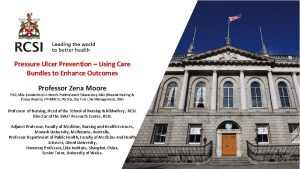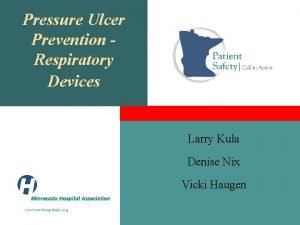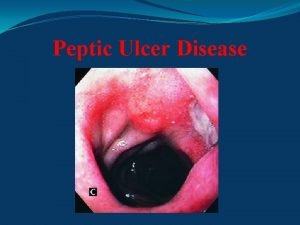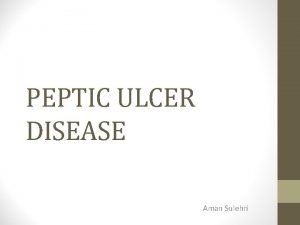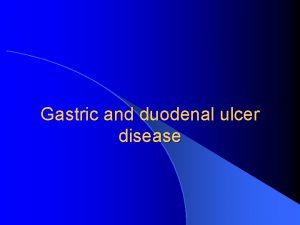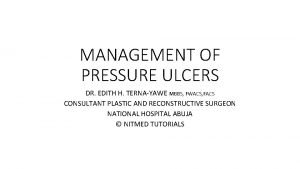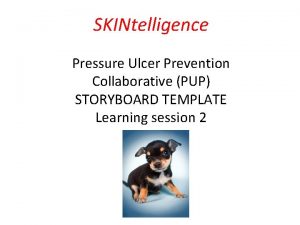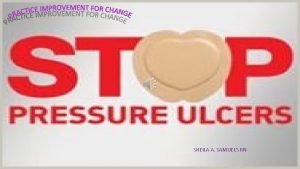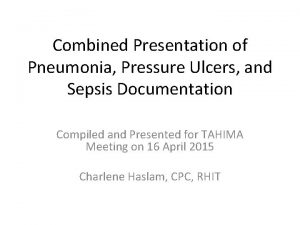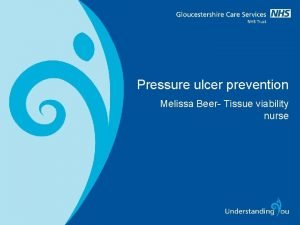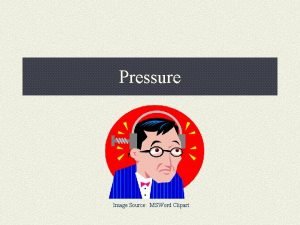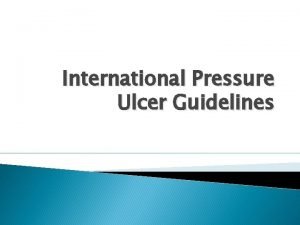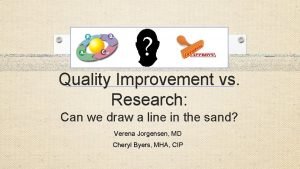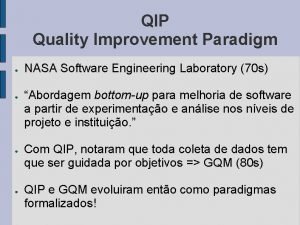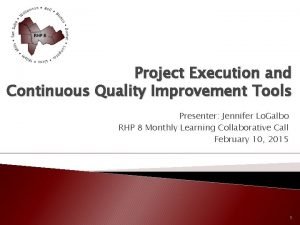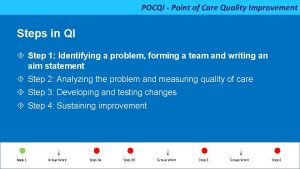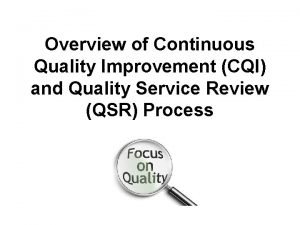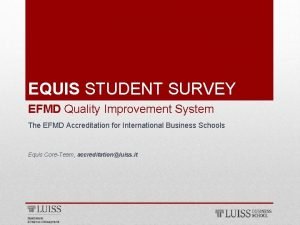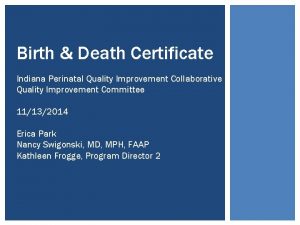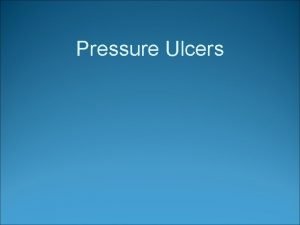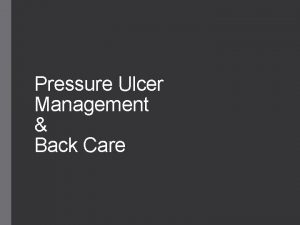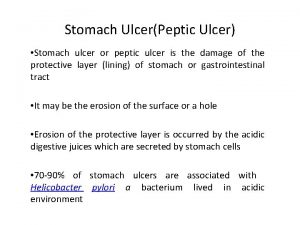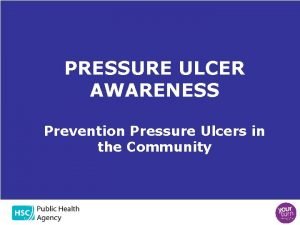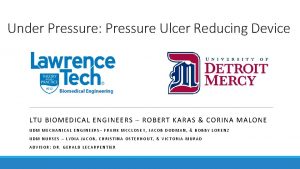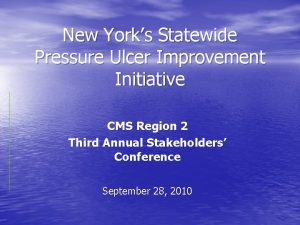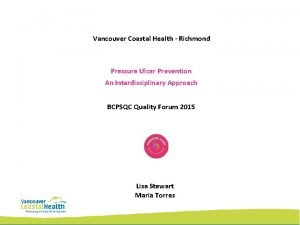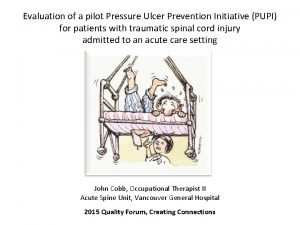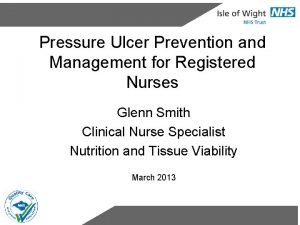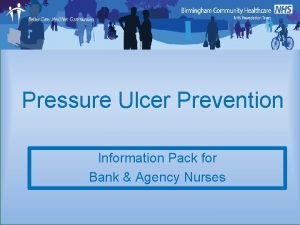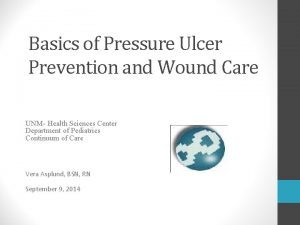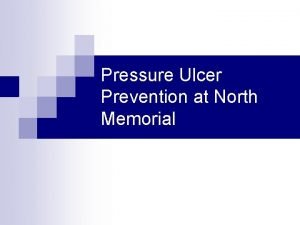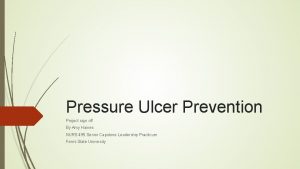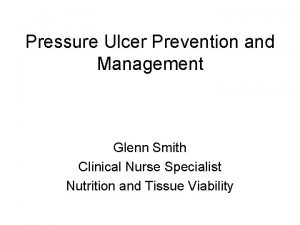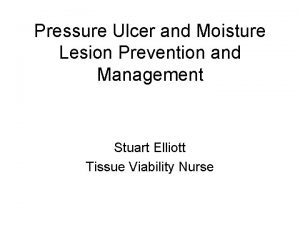Quality Improvement Activities in Pressure Ulcer Prevention Programs




























- Slides: 28

Quality Improvement Activities in Pressure Ulcer Prevention Programs: Findings from a National Survey Rebecca S. Miltner, RN, Ph. D, CNL, NEA-BC Assistant Professor University of Alabama at Birmingham Yalda Rahimi, RN, BSN, MSHA, PHN Fellow, VA National Quality Scholars Program Greater Los Angeles VA Healthcare System Lynn Soban, RN, MPH, Ph. D Research Scientist II Cedars-Sinai Medical Center 1

Learning Objectives � Describe the quality improvement activities for pressure ulcer prevention reported by Chief Nursing Officers in the Veterans Health Administration. 2

Background � Hospital acquired pressure ulcers (HAPUs) are a serious and costly event, and most can be prevented. � The Veterans Health Administration (VHA) set an aspirational goal of zero and provided guidance for comprehensive pressure ulcer prevention programs. � Little is known about the variations in hospital PU prevention programs, including the nature of quality improvement (QI) activities targeting PU prevention. 3

Comparison of strategies to support PUP program implementation Strategy Policy Committee or Quality Improvement Team Wound Care Specialists or Wound Care Team Collection and Monitoring of Performance Data Staff Education Documentation Systems Improvement Activities NPUAP 1 AHRQ 2 VHA 3 IHI 4 Yes Yes Yes No Yes Yes Yes No Yes Yes 1 National Pressure Ulcer Advisory Panel, European Pressure Ulcer Advisory Panel and Pan Pacific Pressure Injury Alliance. (2014). Prevention and Treatment of Pressure Ulcers: Quick Reference Guide. 2 Agency for Healthcare Research and Quality (AHRQ). (2011). Preventing Pressure Ulcers in Hospitals: A Toolkit for Improving Quality of Care. Rockville, MD: U. S. Department of Health and Human Services. 3 Veterans Health Administration. (2011). VHA Handbook 1180. 02 Prevention of Pressure Ulcers. 4 Institute for Healthcare Improvement (IHI). (2011). How-to Guide: Prevent Pressure Ulcers. Cambridge, MA: Institute for Healthcare Improvement. 4

Data Source � VA Survey of Pressure Ulcer Prevention in Acute Care Hospitals � National survey fielded to all VA acute care hospitals (n=121) ◦ Key informant: Chief Nursing Officer or delegate(s) ◦ Fielded June-Dec 2014 ◦ 96% response rate (n=116) 5

Overview of Survey Content Basic building blocks Resources and supports Performance Improvement • Policy, committee, wound care specialist, staff education • Documentation systems, access to equipment, systems to facilitate communication across team, resources for staff and patient education • Projects completed, barriers, facilitators, best practices 6

Overview of Survey Content Basic building blocks Resources and supports Performance Improvement • Policy, committee, wound care specialist, staff education • Documentation systems, access to equipment, systems to facilitate communication across team, resources for staff and patient education Focus for today’s presentation • Projects completed, barriers, facilitators, best practices 7

Analytic Methods � Secondary data analysis using mixed methods � Quantitative responses from survey questions were analyzed using simple descriptive statistics. � Qualitative responses of open-ended survey questions were analyzed using conventional content analysis. 8

Key program elements are in place Key Elements of PU Prevention Programs n = 116 % Yes Policy 115 99. 1% Committee or QI Team 114 98. 3% Wound Care Specialists/Team 114 98. 3% Performance Data Monitoring 114 98. 3% Staff Education to Nurses 112 96. 6% 9

Evidence of QI Activities Committee n % Yes Monitors data specific to PU preventions (n = 113) 109 96. 5% Develops a plan for PU improvement (n = 113) 109 96. 5% Sets goals for improvement (n = 111) 106 95. 5% n % Yes Monitors clinical practice (n = 114) 102 89. 5% Provides input for PU prevention improvement projects (n = 114) 110 96. 5% Wound Care Specialists 10

QI projects are also highly reported Has your hospital initiated any projects/activities in the last 3 years to improve PU prevention? Yes: 91. 4% Mean 4. 2 (SD 4. 1) Range 1 -30 11

Qualitative Methods �Open-ended text data ◦ 3 questions specific to QI ◦ 5 questions specific to program elements (committee, WCS, documentation, data, and facility resources) �Conventional Content Analysis ◦ First level coding by two investigators with validation by third investigator. ◦ Second level analysis for emerging themes. 12

Most Commonly Reported Best Practices �Staff education �Beds and equipment �Champions �Data monitoring and management 13

Supports and Barriers to PU Prevention Efforts �Most common support codes: ◦ Wound Care Specialists ◦ Leadership at all levels ◦ Educational activities ◦ Equipment availability �Most frequent barrier codes: ◦ Time ◦ Staff engagement 14

Emerging Themes �Managing the outcomes data. �Structural supports for PU prevention. �Underdeveloped QI activities. 15

Themes �Managing the outcomes data. ◦ We collect the VANOD data on a monthly basis then do a chart review of those HAPU listed by VANOD, then determine which if any are true HAPUs then report to upper management our actual HAPU rate for the month. VANOD often incorrectly lists some wounds as HAPUs, there are errors in documentation, human error, and unavoidable are unable to be excluded ◦ (we use an) excel spreadsheet that tracks pressure ulcers and if they are nosocomial - we monitor every pressure ulcer and whether or not it's hospital acquired, what unit it was acquired on, when it occurred, stage/etc. We develop these into monthly reports. We compare and contrast our 'raw' data to quarterly prevalence studies, the VANOD monthly reports, and quarterly aspire and report it to leadership as well as to the wound/skin care committee who are then to report it to their individual units. . 16

Accurate documentation Which of the current systems/ processes are used in your hospital? n = 116 % Yes Second nurse verifier for skin assessment of all new admissions (concurrent activity). 32 27. 6% WCS performs initial inspections on all new admissions (concurrent activity). 5 4. 3% WCS verifies presence of PU prior to documentation (concurrent activity). 40 34. 5% WCS reviews VANOD Daily Skin Report to assure accurate documentation (retrospective activity). 80 69. 0% 17

Themes �Structural supports for PU prevention. ◦ …all hospital nursing staff were provided with one week of education. One day was completely devoted to Wound Care. The Topics included: Pressure Ulcer Prevention, Pressure Ulcer Treatment, Nutrition and Wound Care, Lower Extremity Ulcers, Legal Aspects of Wound Care and VANOD skin assessment. It was a wonderful opportunity for staff. ◦ Strong Skin Care Champion Program, utilized as developmental tool and succession planning for future/vacant wound care positions. ◦ Certified wound care nurses at the bedside as well as in the OP and IP areas. We have 3 FTE and 2 intermittent APN. We have BSN nurses that are certified x 5. This gives a great opportunity to do education. ◦ Technology: all low air loss beds in the ICU, Bariatric Low Air Loss available in the hospital, Hover Matts assist with turning. Hoyer Lifts to transfer patient from the bed to chair. 18

Themes �Underdeveloped QI activities. ◦ Currently we are doing a trial with the application of Marathon skin protectant around all NG tubes to see if this prevent pressure ulcers that occur in the nares from this device. ◦ We are addressing discrepancies via the QI process to make the needed changes to improve documentation. ◦ Support from Logistics to improve the process to request and deliver low air loss mattresses more promptly and efficiently. ◦ National Center for Patient Safety (breakthrough collaboratives) to reduce hospital acquired conditions. 19

Skin Bundles Have you considered adopting a Skin Bundle? n = 114 % Yes Not considered 11 9. 7% Considered, but not adopted 26 22. 8% Considered and planning to adopt 21 18. 4% Adopted 44 38. 6% Not sure 12 10. 5% 20

Quality Improvement: What is it? Quality Improvement is a data-driven, formal, and iterative approach to the analysis of performance and the systematic efforts to improve it. 21

Quality Improvement: what is it? Quality Improvement is a data-driven, formal, and Our data show very little iterative approach to the analysis of performance evidence of QI methods and the systematic efforts to improve it. and tests of change to improve the processes for PU prevention. 22

Comparison of strategies to support PUP program implementation Strategy Policy Committee or Quality Improvement Team Wound Care Specialists or Wound Care Team Collection and Monitoring of Performance Data Staff Education Documentation Systems Improvement Activities NPUAP 1 AHRQ 2 VHA 3 IHI 4 Yes Yes Yes No Yes Yes Yes No Yes Yes 1 National Pressure Ulcer Advisory Panel, European Pressure Ulcer Advisory Panel and Pan Pacific Pressure Injury Alliance. (2014). Prevention and Treatment of Pressure Ulcers: Quick Reference Guide. 2 Agency for Healthcare Research and Quality (AHRQ). (2011). Preventing Pressure Ulcers in Hospitals: A Toolkit for Improving Quality of Care. Rockville, MD: U. S. Department of Health and Human Services. 3 Veterans Health Administration. (2011). VHA Handbook 1180. 02 Prevention of Pressure Ulcers. 4 Institute for Healthcare Improvement (IHI). (2011). How-to Guide: Prevent Pressure Ulcers. Cambridge, MA: Institute for Healthcare Improvement. 23

Quality Improvement: what is it? Quality Improvement is a data-driven, formal, and iterative approach to the analysis of performance and the systematic efforts to improve it. QSEN QI Competency Definition: Use data to monitor the outcomes of care processes and use improvement methods to design and test changes to continuously improve the quality and safety of health care systems. QSEN Informatics Competency Definition: Use information and technology to communicate, manage knowledge, mitigate error, and support decision making. 24

Limitations �Difficult to ask specific QI questions in the survey, so the free text responses are indirect indications of QI work. ◦ Use of open-ended responses from program element sections may bias results towards structural elements. �Our respondents were executive leaders who may not be aware of unit level QI activities and tests of change. 25

Conclusion �Respondents report high levels of activities around HAPU data management, but less activities around improving the actual processes of care that may decrease actual HAPU rates. �The active monitoring of performance data do not assure that the data will be used to make systems changes. 26

Implications �Future work needed to better understand current level of knowledge and skills of healthcare professionals around QI and Informatics. �Also need to know more about hospital and unit level QI activities for hospital acquired conditions such as HAPU. 27

Questions? smiltner@uab. edu lynn. soban@cshs. org 28
 Primary prevention secondary prevention tertiary prevention
Primary prevention secondary prevention tertiary prevention Sskin bundle hse
Sskin bundle hse Nasal cannula pressure ulcer prevention
Nasal cannula pressure ulcer prevention Quality improvement vs quality assurance
Quality improvement vs quality assurance Compliance vs quality
Compliance vs quality Ulcers in the antrum
Ulcers in the antrum Trifoliate duodenum
Trifoliate duodenum Anatomy and physiology of peptic ulcer ppt
Anatomy and physiology of peptic ulcer ppt Longitudinal ulcers in typhoid
Longitudinal ulcers in typhoid Ulcer niche and ulcer notch
Ulcer niche and ulcer notch Modified johnson classification for gastric ulcer
Modified johnson classification for gastric ulcer Bully prevention programs
Bully prevention programs Cpmcd in software engineering
Cpmcd in software engineering Sore grade
Sore grade Pressure ulcer safety cross template
Pressure ulcer safety cross template Pressure ulcer pico question
Pressure ulcer pico question Pressure ulcer query template
Pressure ulcer query template Category 4 pressure ulcer
Category 4 pressure ulcer Why doesn't air pressure crush objects
Why doesn't air pressure crush objects International pressure ulcer guidelines
International pressure ulcer guidelines Precca
Precca Jhm irb
Jhm irb Qsen patient centered care examples
Qsen patient centered care examples Quality improvement paradigm
Quality improvement paradigm Define continuous quality improvement
Define continuous quality improvement Pocqi
Pocqi Define continuous quality improvement
Define continuous quality improvement Efmd quality improvement system
Efmd quality improvement system Indiana perinatal quality improvement collaborative
Indiana perinatal quality improvement collaborative

